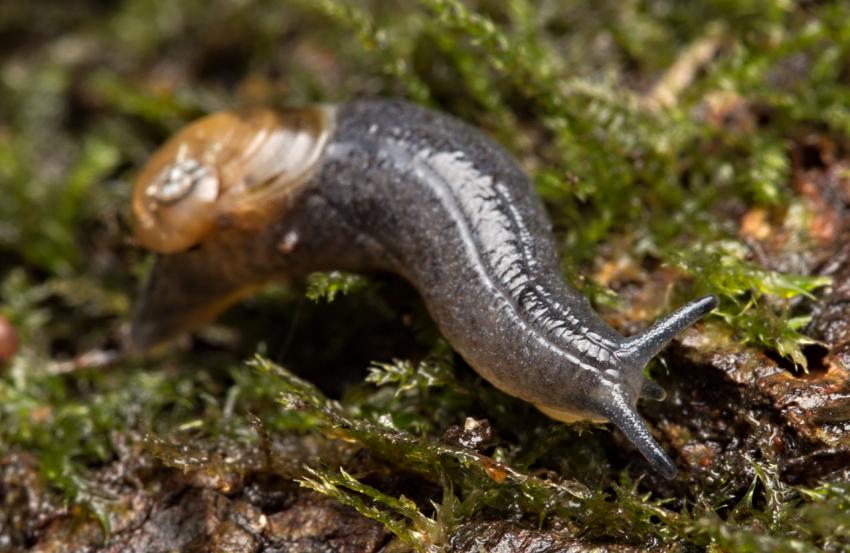A rare brain-invading disease caused by the worm Angiostrongylus cantonensis is spreading fastly in Maui, Hawaii. Experts have linked this phenomenon to climate change and globalization.
Officials from Maui, Hawaii, have warned citizens about certain locations to stay away from snails or slugs as contact with them with bare skin could lead to the development of the brain-invading parasite, also called rat lungworm. The latter can produce meningitis in humans, according to a reported issued by the Centers for Control Disease and Prevention.

To this date, there are as much as six confirmed cases of the rat lungworm parasite in Maui, as local website Maui News reported on Saturday. Health officials have stated that among the six confirmed cases, two of them involve visitors of the island that came from North Carolina on vacation, while the other 4 cases involve residents.
Before the outbreak, Maui had only witnessed two cases of the rat lungworm disease in the past. According to Janice Okubo, a spokeswoman for the state Department of Health, the last case had taken place in 2010. The information authorities have so far also pointed to a seventh case that involves a resident that could have contracted the parasite while visiting Hawaii.
Over the last ten years, Hawaii has experienced more than 70 cases of rat lungworm cases among its residents, the Hawaii State Legislature registers show.
The primary cause for the spread of the disease is the contact with invasive semi-slug, which is very common in some regions of the Big Island, where most cases of the parasite have been reported. According to State Sen. J. Kalani English, the disease is concentrated mostly at the Valley Isle zone, as he advised residents to take precautions to avoid a bigger spread. He also noticed that most of the known cases of the disease were from residents of Maui in the Hana area.
Rat lungworm disease
This disease is a parasitic nematode that infects rat’s lungs, blood, and brains. Once the rat has the infection, they defecate the larvae, and then it spreads through several animals like slugs and snails. A person can contract the disease by eating one of the hosts of these worm larvae, and for this reason, residents of Maui are terrified about what they can and cannot eat now.
This parasite can live in a person’s system for several months, and it can produce permanent damage to brain tissue and membrane. Among the possible symptoms of the disease, there are fever, nausea, inflammation and different pains. In most cases, this condition could produce coma and death in patients.
“If you could imagine, it’s like having a slow-moving bullet go through your brain,” said epidemiologist Sarah Park, of the Hawaii Department of Health.”There’s no rhyme or reason why it’s going to hang out in this part of the brain or that part of the brain.”
The intensity of a rat lungworm disease in patients varies in different cases. The detection of the illness itself is complicated for doctors, and even an effective treatment has not been developed.
In 2016, more than 30 countries have presented cases of this rare parasitic disease. Officials have said the parasite is present in environments where its development seemed impossible. In fact, officials were surprised when a person showed the brain parasite in Oklahoma. The disease has also been present in California, Alabama, Louisiana and Florida.
Climate change could be triggering the rat lungworm outbreaks
Several groups of scientists have determined that one possible reason for the rise of the disease could be climate change and the variations that it produces in certain habitats.
The first known case of the rat lungworm disease was reported in 1944, in Taiwan. Through the years, the infection has spread to several parts of the globe, including the United States. The reason for this, according to experts, is the presence of contaminated rats in cargo ships that came from areas where the disease was already developed.

“Most new infections seem to be caused by pathogens already present in the environment, which have been brought out of obscurity, or given selective advantage, by changing ecological or social conditions,” a World Health Organization report from 2004 reads.
Some scientists have warned that climate change has already been responsible for the spreading of other diseases like Zika virus, since many infections can not survive in areas that are not tropical. They said that a warming world is a main contributor for new outbreaks.
Source: Gizmodo

What kills me are the people who say that more feral cats are needed to control the rats and save us from rat diseases. In fact Hawaii is the first place everyone can point to and cite as proof that it isn’t true. Feral cats and mongooses together don’t control rats. The end.
Slugs in the brain ?? – Very confusing !
The parasite uses slugs and snails as a host at the first stage of development, before infecting rats for the second stage. It can infect a human instead of a rat and cause the damage they’re talking about.